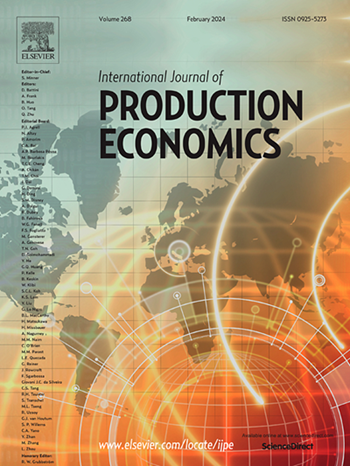Supporting delivery allocation decisions in a beverage company with multi-criteria methods and an optimization model
IF 10
1区 工程技术
Q1 ENGINEERING, INDUSTRIAL
引用次数: 0
Abstract
Bidding processes are common for transparency purposes in several areas, such as civil construction and energy exploration. Usually, public agencies are responsible for the projects and formal notices are launched for the competition of interested parties. Also, those processes may occur in the private sector, and the decision process involves multiple dimensions that may be conflicting. The present study presents a multi-criteria model to support decisions involving the allocation of deliveries (pallets) in the bidding process of a beverage company, where a set of carriers compete for the distribution of beverages in routes. On each route, there is a specific set of competing carriers. In addition, a carrier can participate in the process of more than one route, however, the carrier's capacity must be respected, considering the combination of allocations received on the solution. The Best-Worst Method (BWM) is used to obtain weights for criteria that are later applied in the PROMETHEE II method. The net flows from PROMETHEE II are then used in an assignment model, which outputs the share allocated to each carrier in each route. The tests and models include several practical constraints, and the approach achieved consistent results that may be replicated to support decision-making and future processes.
用多准则方法和优化模型支持饮料公司的配送分配决策
在民用建筑和能源勘探等几个领域,为了提高透明度,招标过程是很常见的。通常,公共机构负责项目,并发布正式通知,让有关各方进行竞争。此外,这些过程可能发生在私营部门,决策过程涉及可能相互冲突的多个方面。本研究提出了一个多标准模型,以支持在饮料公司竞标过程中涉及配送(托盘)分配的决策,其中一组承运人竞争在路线上分配饮料。在每条航线上,都有一组特定的竞争运营商。此外,承运人可以参与多个路线的过程,但必须考虑到解决方案上收到的分配组合,承运人的容量必须得到尊重。最佳-最差法(Best-Worst Method, BWM)用于获得标准的权重,这些权重随后应用于PROMETHEE II方法。然后将PROMETHEE II的净流量用于分配模型,该模型输出每条路线上分配给每个运营商的份额。测试和模型包括一些实际的限制条件,并且该方法取得了一致的结果,这些结果可以被复制,以支持决策和未来的进程。
本文章由计算机程序翻译,如有差异,请以英文原文为准。
求助全文
约1分钟内获得全文
求助全文
来源期刊
CiteScore
21.40
自引率
7.50%
发文量
266
审稿时长
52 days
期刊介绍:
The International Journal of Production Economics focuses on the interface between engineering and management. It covers all aspects of manufacturing and process industries, as well as production in general. The journal is interdisciplinary, considering activities throughout the product life cycle and material flow cycle. It aims to disseminate knowledge for improving industrial practice and strengthening the theoretical base for decision making. The journal serves as a forum for exchanging ideas and presenting new developments in theory and application, combining academic standards with practical value for industrial applications.

 求助内容:
求助内容: 应助结果提醒方式:
应助结果提醒方式:


